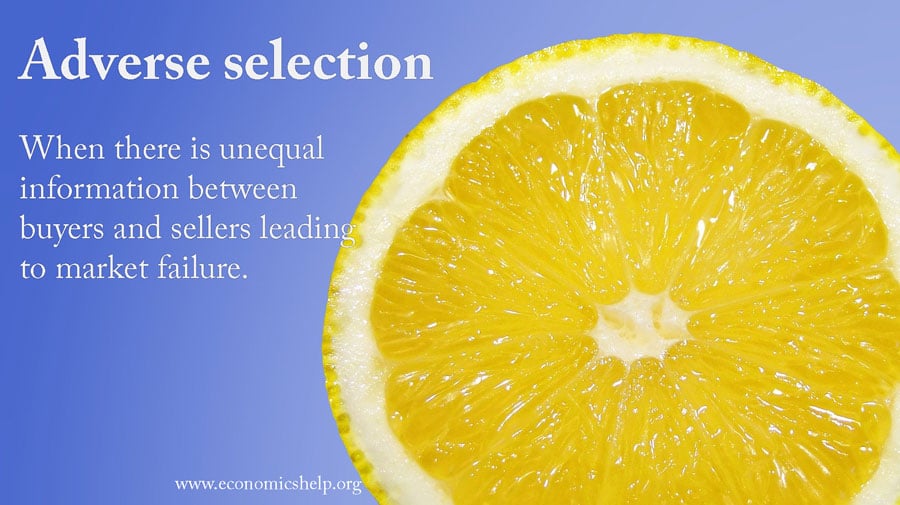
Adverse selection occurs when there is asymmetric (unequal) information between buyers and sellers. This unequal information distorts the market and leads to market failure.
Adverse selection occurs because of information asymmetries and the difficulties in selecting customers.

Adverse selection explained for insurance
Suppose an insurance firm offered health insurance to the general public. It is likely to have the highest take-up rate amongst unhealthy people – people who don’t exercise, people who smoke. They are the group most likely to need health care; therefore, it makes sense for them to take out insurance. Healthy people are less likely to take out health insurance – if the price of health insurance is determined by the average unhealthy person.
If insurance premiums are based on the needs of smokers, then the premiums will be high. Therefore, there is no incentive for healthy people to take out insurance.
It is also possible that the seller will have better information than buyers, and sellers only sell the product when it is favourable to them.
To avoid adverse selection, firms need to try and identify different groups of people. This is why there are health insurance premiums for people who smoke and obese people.
Insurance firms will charge different rates to consumers depending on factors, such as
This means that those who are at most risk will likely have higher premium rates.
Compulsory purchase
American health care is primarily based on private insurance. This has led to problems of adverse selection, with young, healthy people more likely to avoid taking out health insurance. This led to higher overall premiums – making it unaffordable for many.
One element of the Affordable Health Care act was to have a compulsory insurance element. If people choose not to take out insurance, they have to pay a tax premium. The idea is that by encouraging people to purchase, it will lower overall premiums as people with lower-risk will join the ‘insurance pool.’

George Akerlof investigated the asymmetry of information in the market for second-hand cars.
In a 1970 paper “The Market for Lemons,” he was awarded the Nobel Prize in Economics (2001). Akerlof suggested bad cars ‘lemons’ were more likely to be put onto the second-hand market, reducing the price. Therefore good cars were held back and not sold. It is sometimes known as the ‘bad driving out the good.’
Akerlof suggested the problem of adverse selection distorted the market, leading to lower prices and the lower average quality of cars.
Others have suggested the second-hand car market can try to use warranties and quality controls to overcome this problem of poor information.
Related